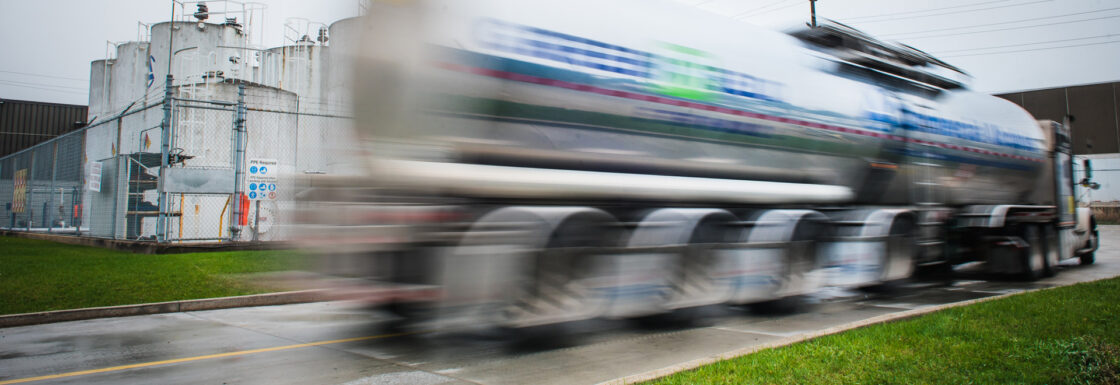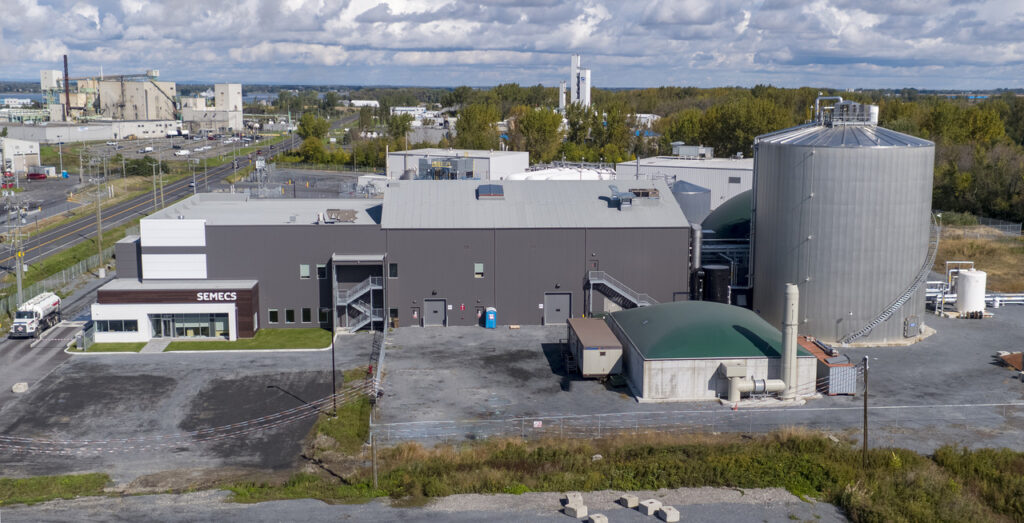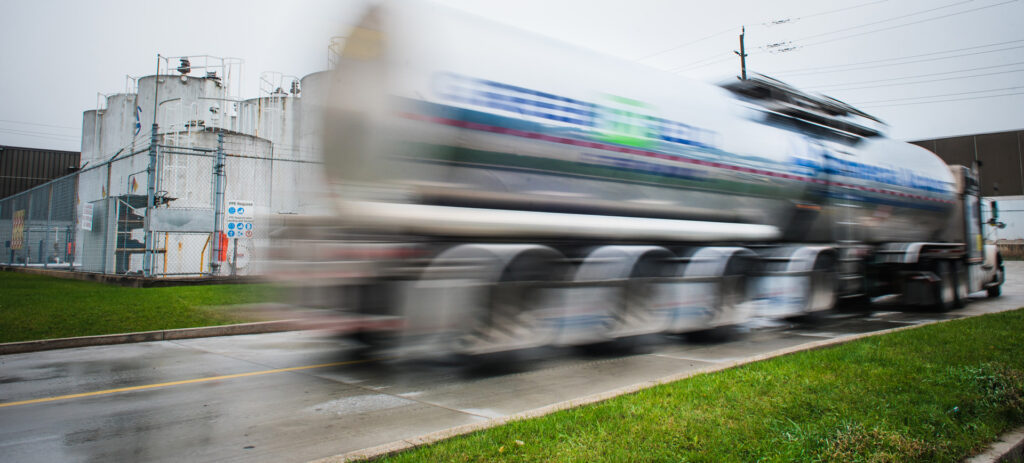Behind-the-scenes at Greenfield: An interview with CEO Howard Fields

What was the genesis behind Greenfield’s focus on sustainability?
In the late ’90s, before the majority of people were familiar with climate change and global warming, Greenfield worked with the Government of Ontario and the Grain Farmers of Ontario to create the fuel ethanol industry in Canada. We built our first fuel ethanol plant in Chatham, Ontario. A few years later, we commissioned our second fuel ethanol plant in Varennes, Quebec, working with the Quebec government and Grain Growers of Quebec to lower gasoline emissions. A year after that, we built our third and largest fuel ethanol plant in Johnstown, Ontario.
Next, we replaced the bunker fuel with natural gas at our very first beverage and industrial alcohol plant in Tiverton, Ontario — natural gas burns significantly cleaner than bunker fuel. Additionally, we partnered with Truly Green Farms, a highly advanced tomato greenhouse across the road from our Chatham plant, sending them our green CO2 from our fermentation process and waste heat to lessen their natural gas needs.
I could go on and on. Let’s just say that increasing sustainability, reducing emissions and lowering our carbon intensity has been at the core of Greenfield’s ambitions for more than two decades.
Our sustainability culture was fostered by our founder’s passion for improving the health of the planet. Ken Field loves the outdoors. He’s an avid golfer, tennis player and “beach-walker.” He kayaks, cycles and has snow skied all over the world. In fact, his favourite meeting place is the Don River Valley Park. As Ken often tells people, “I want my three children, my seven grandchildren and my great-grandchildren to be able to enjoy the outdoors as much as I do.”
At this point, sustainability courses through the veins of our entire organization.

Do you have advice for other CEOs that are seeking to develop a sustainability culture in their organization?
There are a few nuggets of advice I’d offer. First, I believe to have a strong culture of sustainability, everyone in the company has to be behind it — operations, EH&S, accounting, procurement and so on. It has to become part of the company’s core purpose.
At Greenfield, our Vision and Mission, which are both focused on the health of the planet, were developed in a process that involved more than half of our employees. When the larger team is involved in the process, the engagement is so much more authentic. So, I would encourage leaders to involve as many team members as possible to provide input on the company’s purpose around sustainable practices.
Second, it’s vitally important to establish short- and long-term objectives that meet specific sustainability targets.
Third, I would encourage transparency on achievements and obstacles. The achievements will give all constituents — customers, partners, suppliers and employees — a big boost, while the obstacles will allow the team to examine the initiative in the light of continuous improvement. Was the initial project too ambitious? Are additional or alternative resources required? Is it still as important as other initiatives?
Being genuine in communications is also extremely important — no greenwashing, or you’ll be called on it by someone inside or outside the company, which can badly damage your credibility with key constituents.
Is there a project you can describe that exemplifies Greenfield’s commitment to sustainability?
One of the undertakings that best reflects our mindset on sustainability and demonstrates a true circular-economy project is our SEMECS anaerobic digestion (AD) plant in Varennes, Quebec. Not only does it address the huge climate problem of disposing of organic waste streams, but it also showcases how to turn waste into opportunity.
The province of Quebec is passionate about fighting climate change. In 2009, Quebec announced its intention to ban the landfilling of organic waste by 2022. It included a support program for qualifying AD and composting operations. We saw this as a huge opportunity — as did three regional county municipalities who joined forces to develop a project with an industrial partner like us.
What emerged was a unique plan involving the three municipalities and Biogaz EG, a joint venture between Greenfield and Groupe Valorr Inc., a waste treatment firm. In collaboration with the three regional municipalities, we developed an AD project to divert 40,000 tonnes of organic waste per year to produce biogas and biofertilizer. By the fall of 2021, the SEMECS AD plant will increase its capacity to 120,000 tonnes of incoming organic waste, making it the largest AD facility in North America.
This is truly a circular economy project. It reduces harmful CO2 emissions from landfills. It produces green co-products for other industries. It’s anchored by clean technology and local government investment. And it’s allowed us to reduce the environmental footprint and carbon intensity of our renewable fuel ethanol.
When you hear businesses and governments talk about getting to Net-Zero, this is precisely the type of public/private innovation and partnership needed to achieve that goal.
The SEMECS project seems very unique. Any lessons or advice you can share for those embarking on significant projects like this?
As with all projects of this size and scope, you need a committed and creative team to get the puck in the net. The success of the project today, and over the course of its expansion, highlights what we do well at Greenfield, which is “learn fast and adapt as we go.”
It’s really critical to stay focused on the end-game because the parameters change constantly with multi-year projects. For instance, the structure of government programs can continue to evolve for years. Following elections, financing realities can shift. Not to mention, engineering and technology challenges abound anytime you undertake something truly unique.
Sometimes, the idea is the easiest part. Lots of companies have big ambitions and can propose creative solutions to solve environmental problems. But the execution is vital.
Our success on the SEMECS project involved several pivots. We moved core functions in-house. We found experts who understood the intricacies of the technology, detailed mechanics and even unforeseen determinates like local seasonality. And we worked in lockstep with our partners to share knowledge and resources as needed.
We wholeheartedly believed in the technology, the business model and the purpose behind the project, so failure was never an option.

Working with the government seems to be a theme with Greenfield to achieve your sustainability objectives. How can the government influence behaviour and dovetail with Greenfield’s goals?
Solid government leadership on climate and sustainability is critical. Regulation is a powerful lever to prevent adverse environmental impacts, like Britain’s Great Smog of 1952, acid rain and depleting ozone levels in the ’90s and, more recently, dangerously high greenhouse gas emissions. It also helps us create cures for society’s ills. With a considerable investment in clean technology and innovation, for instance, the policy could certainly provide a path for a more sustainable future.
Since the beginning of our business in 1989, our approach has been to work with governments at all levels to achieve common goals and be part of the solution. We were the first organization in Canada to support requirements to blend a minimum percentage of renewable content into gasoline, reducing GHGs and minimizing pollution. Today, we’re helping reshape these policies for more modern guidelines related to fuel volumes, carbon intensity and other issues.
Greenfield is an established, leading producer of ethanol and other raw materials, but we’re also at the forefront of developing new biofuels and technologies. This allows us to bring a unique perspective as we continue to cooperate with local and federal agencies. Alongside crucial government actions like the Paris climate agreement and Canada’s Clean Fuel Standard policy, we’re helping push the world’s environmental agenda forward.
I’ve heard teasers about Greenfield being involved in hydrogen and other fuels. Is that the plan?
We’ve got green hydrogen, green methanol, renewable natural gas and all sorts of projects on the way, so stay tuned!


















